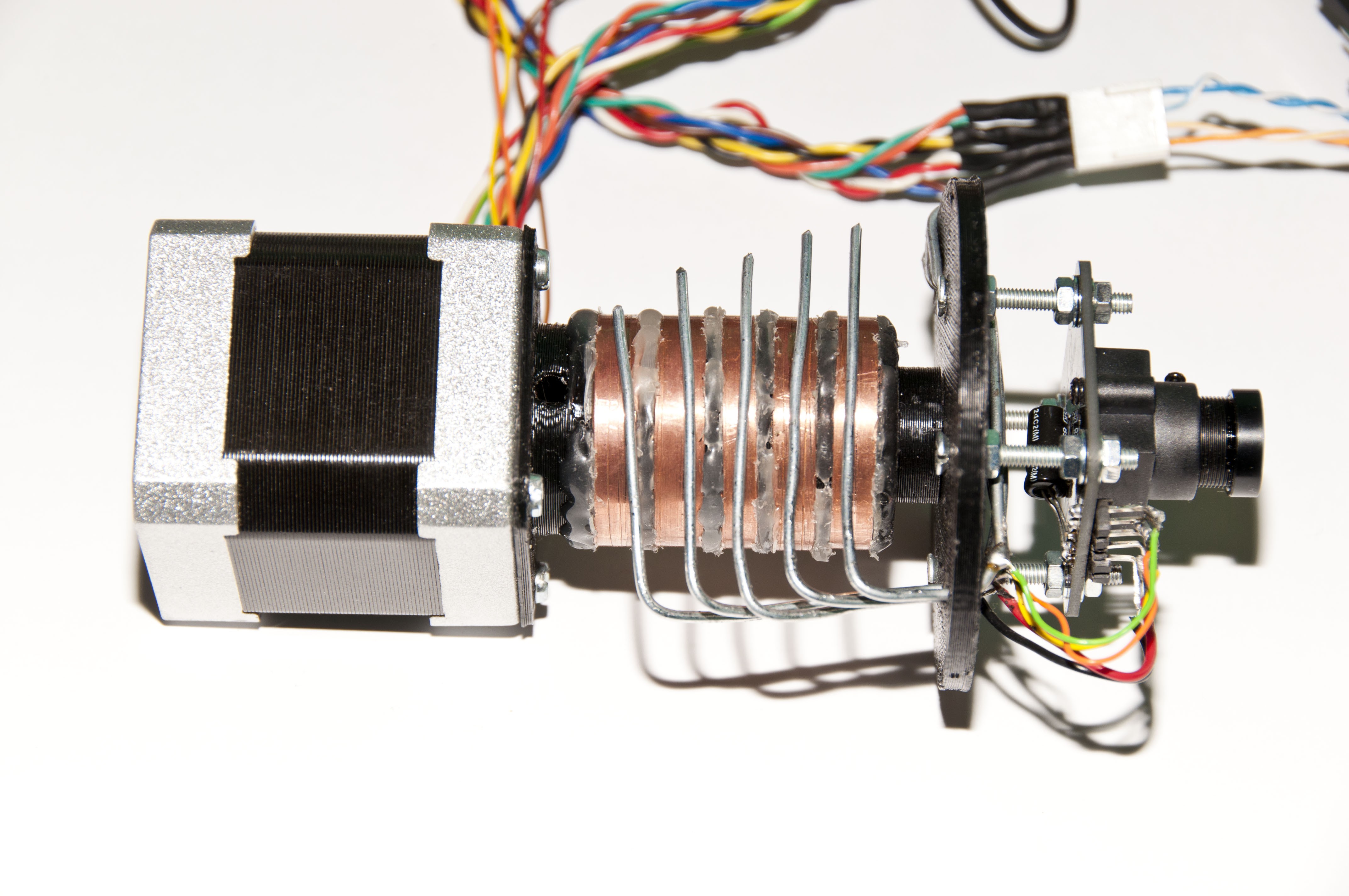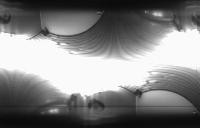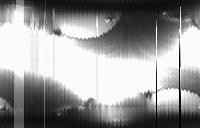The initial prototype uses an STM32F072 Discovery board, a stepper motor, a 3D printed, 5 contact slip ring with a bore down the middle and the LSA. The prototype works so-and-so; the excessive vibrations and unreliable slip ring operation make the obtained results hard to reproduce. We send the data from the STM32 to the computer using a simple UART transceiver and implement a serial interface in MATLAB to capture the results. I will have full technical details of the setup including scope waveforms, etc.

Every column in the image below represents a scanned line at a single step of a 200-step stepper motor. The sensor has 128 pixels, thus the 'image' has 200x128 pixels. The line at the bottom is a speck of dust on the sensor.

This is the magic part. If we run this image through the MATLAB scattered interpolation sequence described in Project Log 2 we obtain the image below. Note that the fisheye effect is more due to the stock lens used on the sensor rather than the algorithm itself.

With a conventional DSLR camera, this is the image taken from *approximately* the same location, but with a much less wide angle:
Now let's take a look at the same picture captured again, after the motor has been dormant for a while and the motor current slightly increased so it doesn't occasionally stall.

The vibrations are very apparent from the periodic nature of the distortions. The uncleaned dust particle on the bottom half of the image confirms that vibrations are indeed the culprit since it's jumping from pixel to pixel for different angles. Furthermore there are some 'blanking' lines where either the slip-ring contact was imperfect or the vibrations caused bad things to happen.
Studying this image in closer detail, we discover that some areas have more vibration induced distortions than others which leads us to believe that the centre of vibrations is not centred.

Discussions
Become a Hackaday.io Member
Create an account to leave a comment. Already have an account? Log In.
There are "telephone handset anti twist" dongles (with slip rings) that might be useful.
Are you sure? yes | no